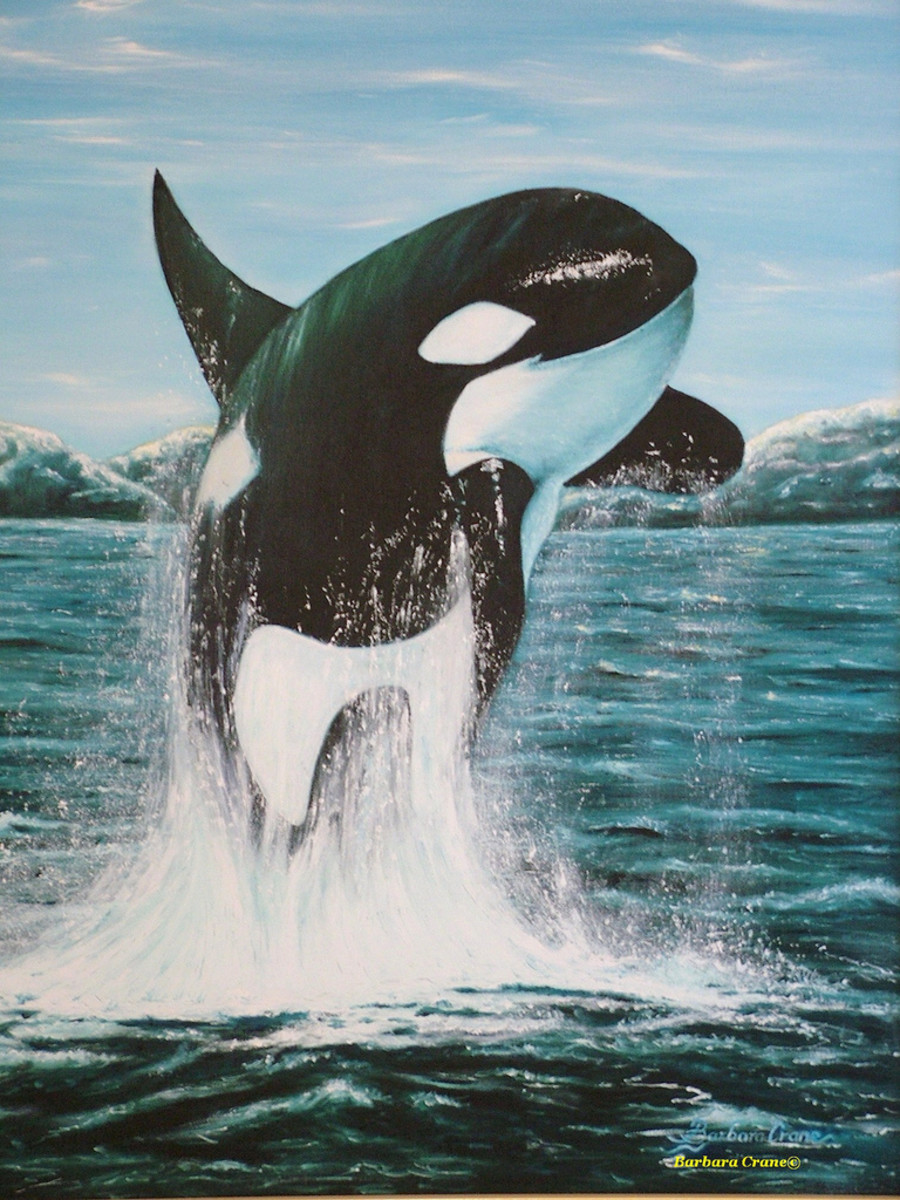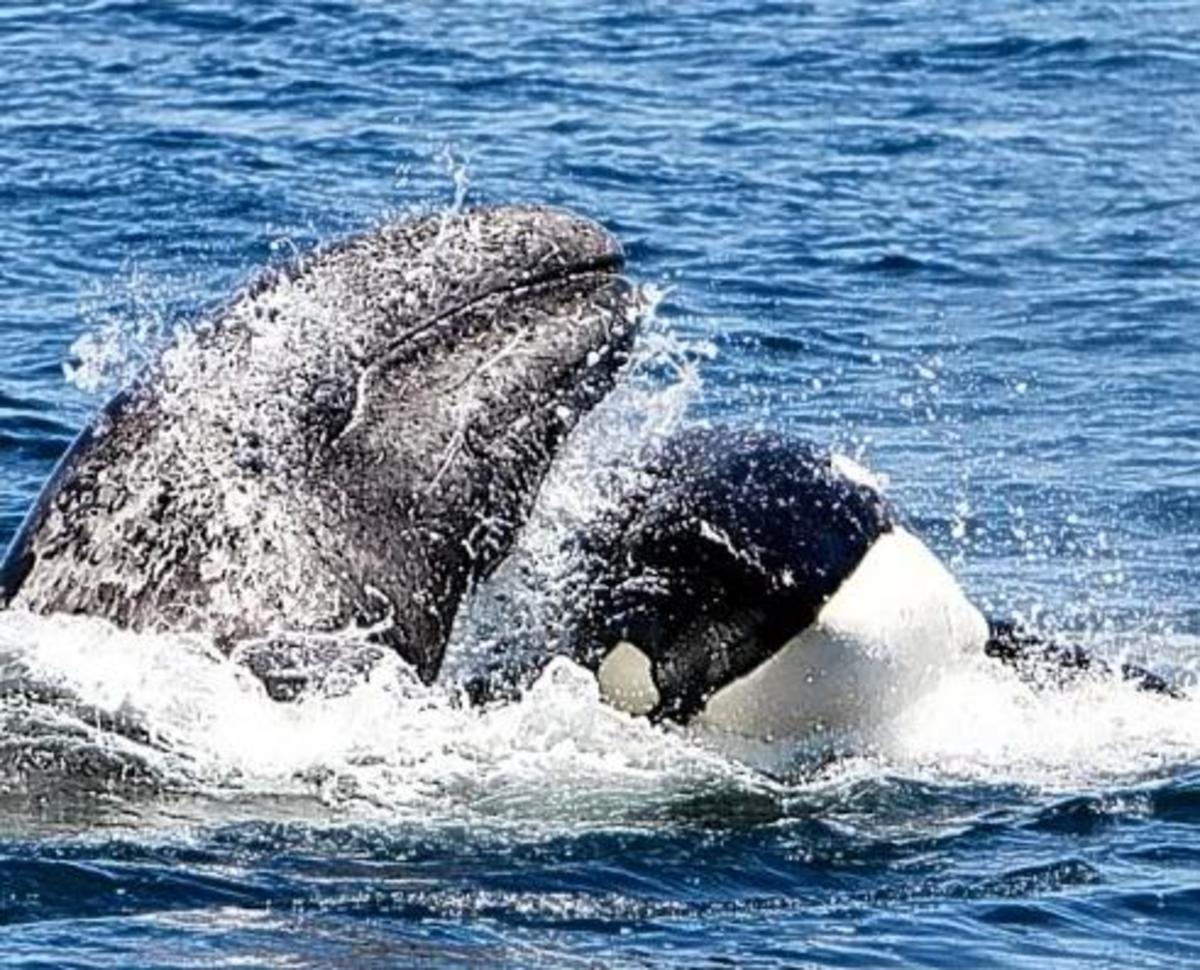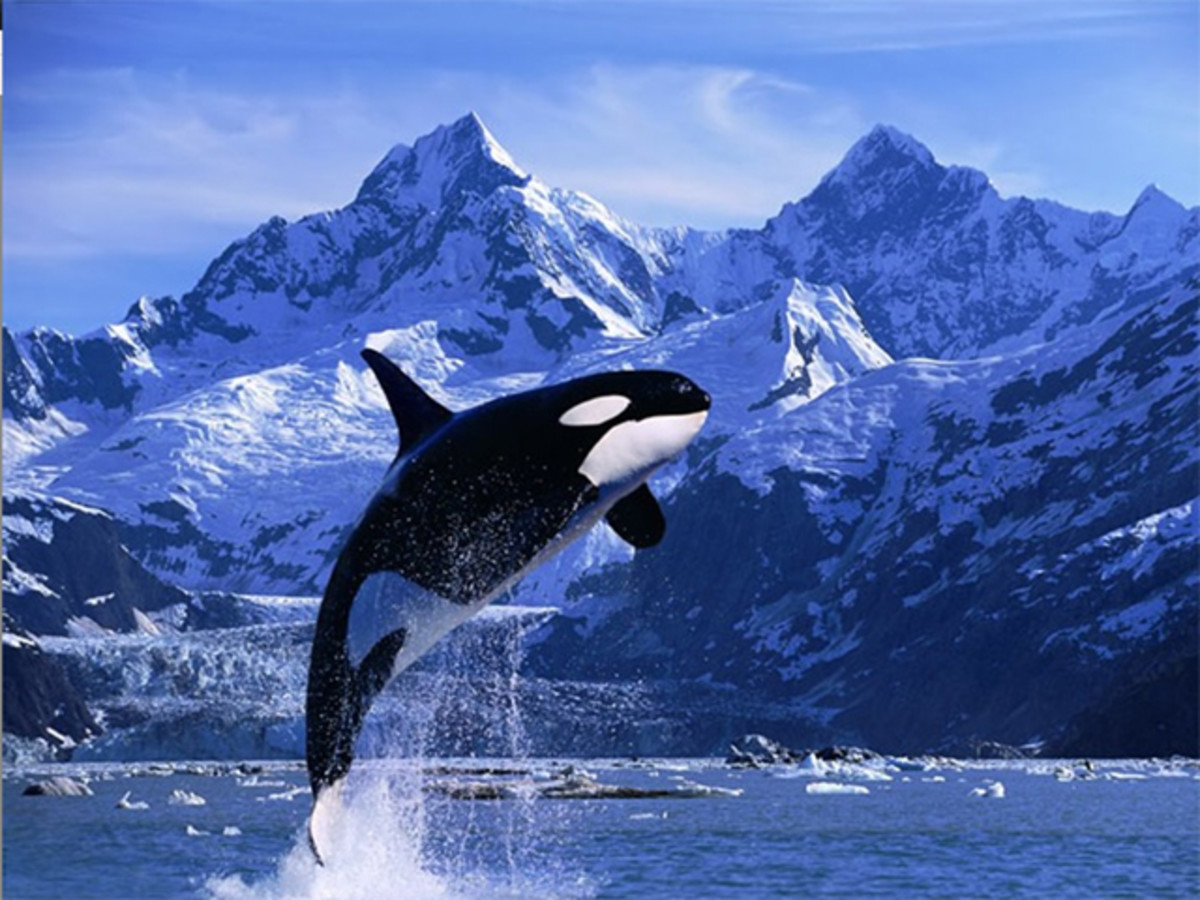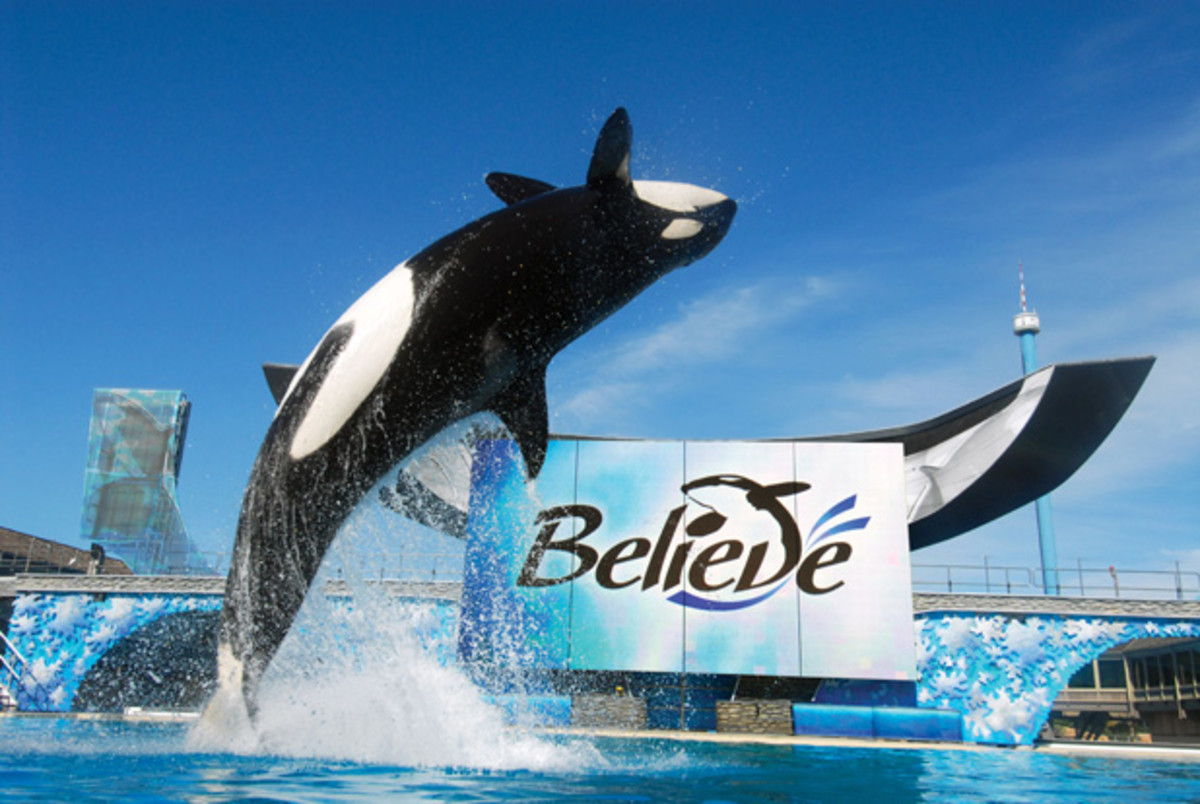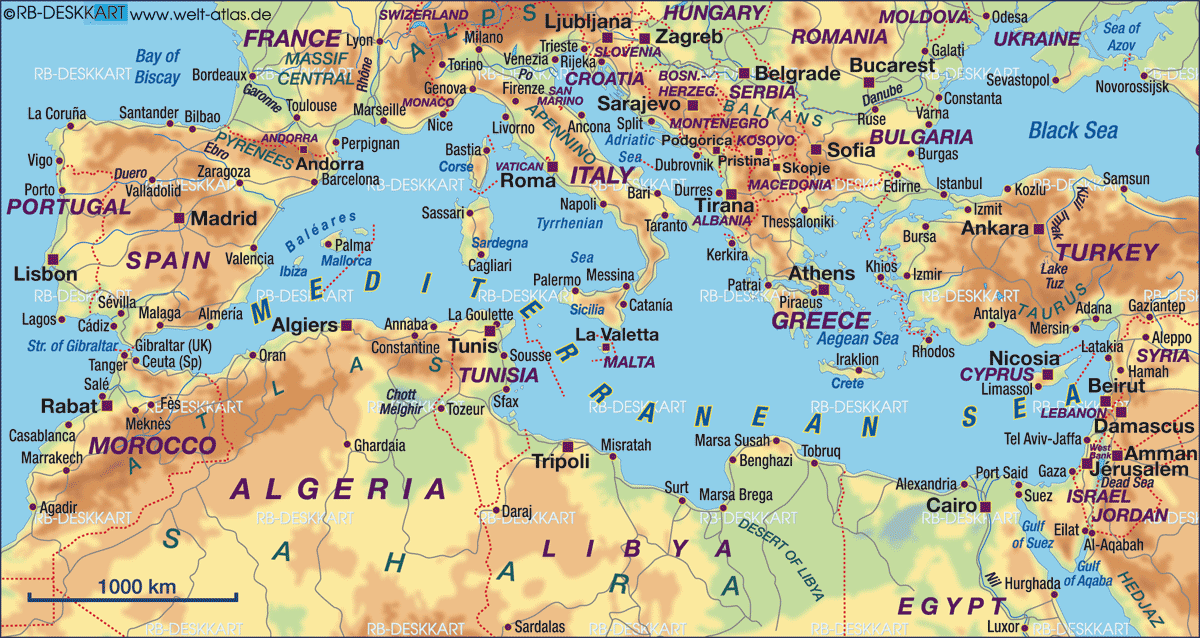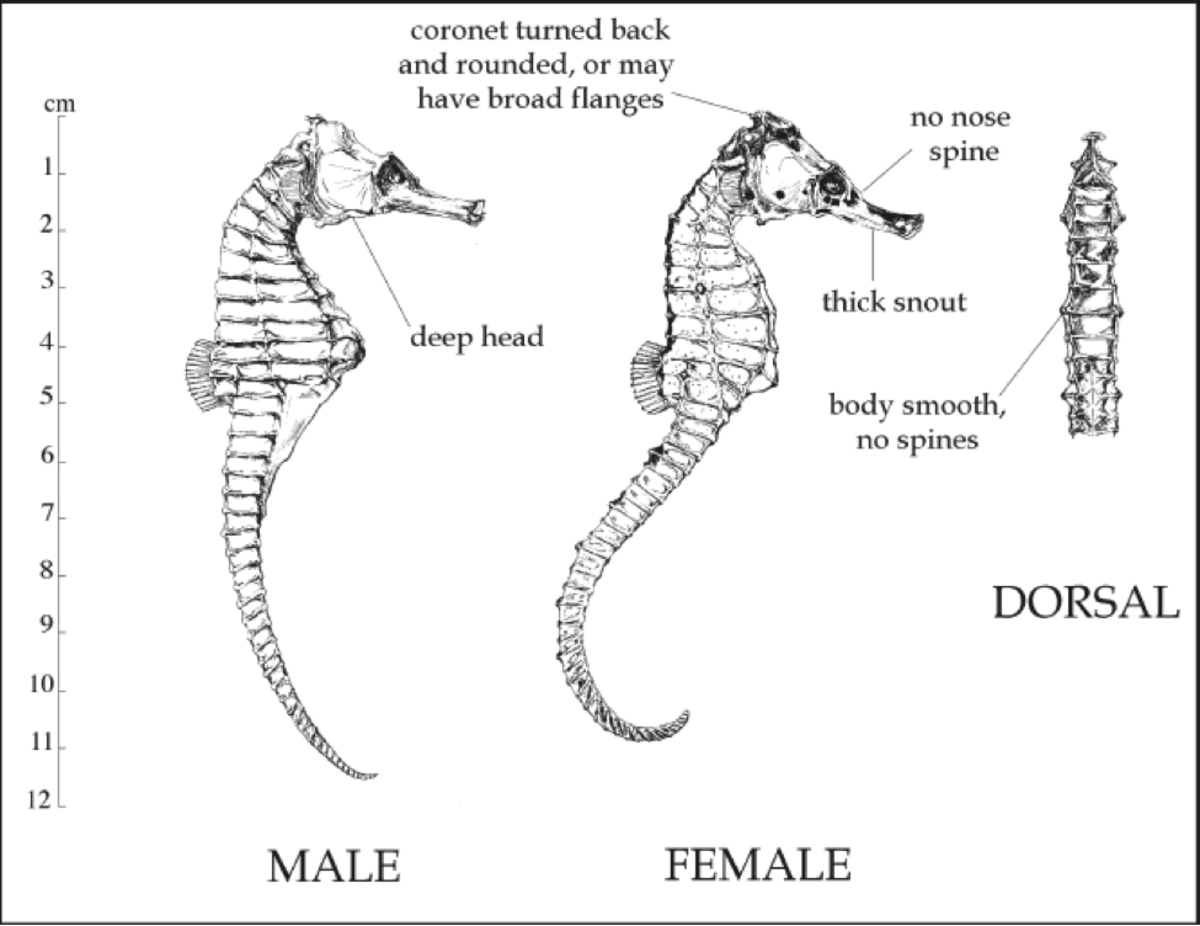- HubPages»
- Education and Science»
- Life Sciences»
- Marine Biology»
- Marine Life
Killer Whale
Scientific Name: Orcinus orca
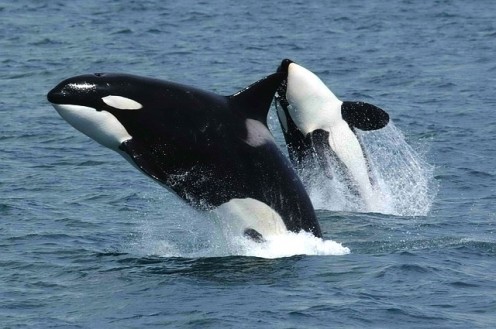
Facts about Killer Whales
Killer Whale Description
When it comes to large mammals you may already know some basic things about the Killer Whale. They aren’t small by any accounts and full grown males can be up to 12,000 pounds. They can also extend the length of about 22 feet. If you take a close look at several of them you will notice some variation in their fluke and the dorsal fin. These characteristics allow them to be viewed as individuals instead of all the same.
The Killer Whale has coloring that allows it excellent camouflage in the water. This includes a body that is all black. The exception is the belly which is white and runs the length of the underside. When they are coming up from the bottom of the water the black keeps them well hidden from the top looking down. Likewise, those below them see the white which also blends in very well.
Killer Whale Anatomy
Even though they can be so heavy, The Killer Whale was definitely designed for the water. They have no trouble getting around in there at all. Many have studied their anatomy carefully and come to this same conclusion. The fact that they feature a tapered fluke and head also help them to have optimum control and balance in the water. They don’t move very fast but area quick enough to maintain their needs.
They are able to pick up vibrations from other living things in the water. This includes their movements so being able to find adequate amounts of prey usually isn’t a problem for the Killer Whale. In addition to that they are able to see very well and to smell very well so overall they have wonderful senses to help them survive in a variety of conditioned that could arise.
Killer Whale Evolution
Even though we realize whales were around more than 50 million years ago, it is interesting to explore what they would have been like. There is no doubt in the mind of experts that the body style of the Killer Whale today is extremely different than what it used to be. In fact, it is believed that they used to be land animals. They had appendages to move around and that they fed on land. Evolution though has allowed them at some point to grow and to take advantage of the food sources located only in the bodies of water.

Amazing Animal Facts
- Facts about Dolphins
Facts about Dolphins, Information about Bottlenose Dolphins, Pink Dolphins. Dolphin Information - Facts about Whales
Whale Facts and Information. Feeding, habitat, distribution, reproduction, anatomy and more. Facts about Species like the Blue Whale, Humpback Whale, Sperm whale, Beluga Whale and many others. - Penguin Facts, Emperor Penguins, Adelie Penguins, King Penguins
Penguin Facts and Information. Feeding, habitat, distribution, reproduction, anatomy and more. Facts about Species like the Emperor Penguin, King Penguin, Humboldt Penguin and many others.
Killer Whale Behavior
Killer Whales will form pods and they are very protective of those in there. They will have their offspring remain in a pod with them from birth until death. As a result many of them in a pod have spent decades together forging bonds that are very strong. They seem to be very intelligent animals as well. While they do realize they are part of a unit, each of them is also able to recognize the fact that they are also an individual.
Killer Whales don’t establish territories in the water like other animals. Instead they tend to have a very nomadic lifestyle. They do well with many other types of life in the water including dolphins. They have very low sounds for communication and it can often sound like singing to human ears. What is interesting is that they sounds they make can be slightly different from those of other pods. This makes it harder to decipher what they are communicating about though.
Killer Whale Habitat
It is a common assumption that Killer Whales need salt water to survive in. While this is true to a point, it isn’t the reality of it. Most of them do live in the oceans out there but a large number of them also live in fresh water. Many rivers and even smaller bodies of water are home to these very large and interesting whales.
Another common assumption is that the Killer Whale needs tropical waters to survive. Many of them do prefer the warmer climates but that doesn’t mean you won’t find them in some colder areas. In fact, there are plenty of them found in both Alaska and Canada. That fact is one many people are very surprised to learn about. They tend to live in deeper areas of the water but they can be observed coming up for air and going towards the shore to look for food.
They can span very large distances in order to find food. While they don’t have a set territory they do have areas that they seem to cover. This can range hundreds of miles though. They do all that they can in order to ensure that all pod members are going to get enough food. All Killer Whales migrate but only a portion of that route is fully understood. Somewhere along the way they are lost to us for a very long time before they eventually emerge again.
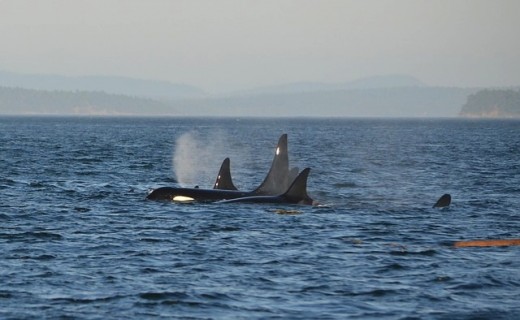
More Animal Facts...
- Facts about Sea Lions
Learning some basic facts about them can help you to understand more about them. - Walrus Facts
Walrus Facts and Information. Feeding, habitat, distribution, reproduction, anatomy and more. Also, the conservation efforts made to preserve Walruses and how humans have interacted with Walruses. - Facts about Seals
Facts and Information about Seals. Feeding, habitat, distribution, reproduction, anatomy and more. Facts about Species like the Harbor Seal, Harp Seal, Hawaiian Monk Seal, and many others.
Killer Whale Feeding Habits
Many people wonder what types of food it takes to successfully feed an animal the size of the Killer Whale. They feed on all sorts of fish out there and all sizes of them. They also consume seals, walrus, sea lions, squid, and penguins. Even very large items including an occasional Moose or Polar Bear have been found among their stomach contents. They have very sharp teeth and large mouths so anything is really possible!
Killer Whale Reproduction
They will only mate while they are migrating which is a big reason why they are take part in it, including those that live in warmer areas. Mating never takes place among members of a pod due to the fact that they are related most of the time. The males tend to take control during this process. They will fight other males for the right to mate with particular females. Those battles can result in serious injuries and even severe bites that end up with the males showing lots of battle scars as they get older.
They tend to mate later in life, about 20 years of age for the males and 15 years of age for the females. Not all of the females that are mature will mate each season though. In fact a female usually only will once very five years or so. Once they do mate though they will dedicate their time to caring for their young for several years, teaching them and nurturing them.
Killer Whale Predators
It is likely no surprise to learn such a large whale doesn’t have any natural predators out there. However, the efforts of humans have made life much more difficult for them. People tend to cause pollution in the water which the Killer Whale has a difficult time with. They can even consume things like old tires and such that make them very sick. Chemical and oil spill can kill entire pods.
The fact that they do consume so much in the way of fish is a problem for those that make their living doing the same thing. They aren’t opposed to the slaughter of Killer Whales since that would mean they are able have more fish collected daily in their nets. There are adequate numbers of them out there, a definitely count is hard to get though with their movements. Even so, people should be conscious of how their own efforts do affect these animals.

